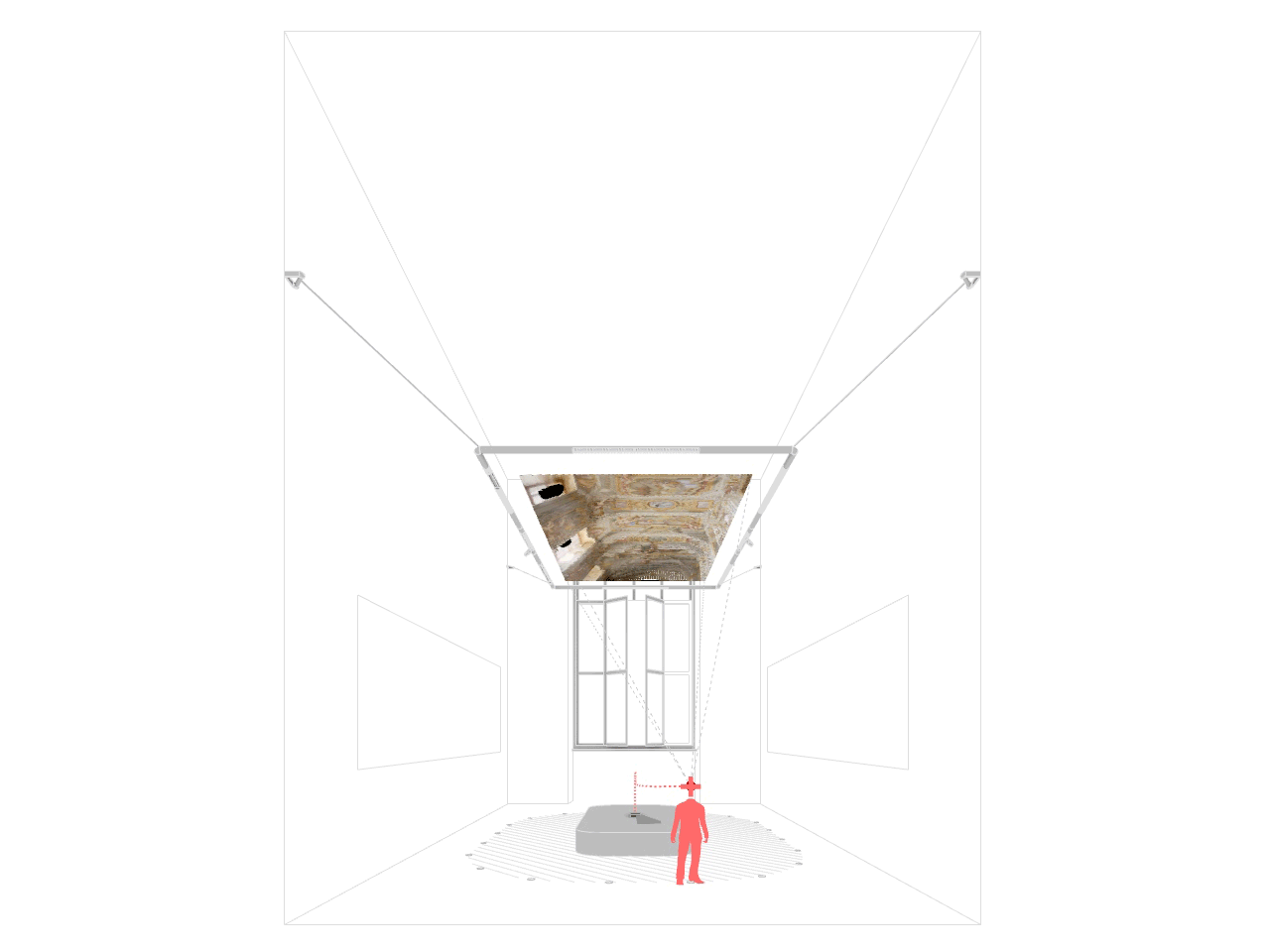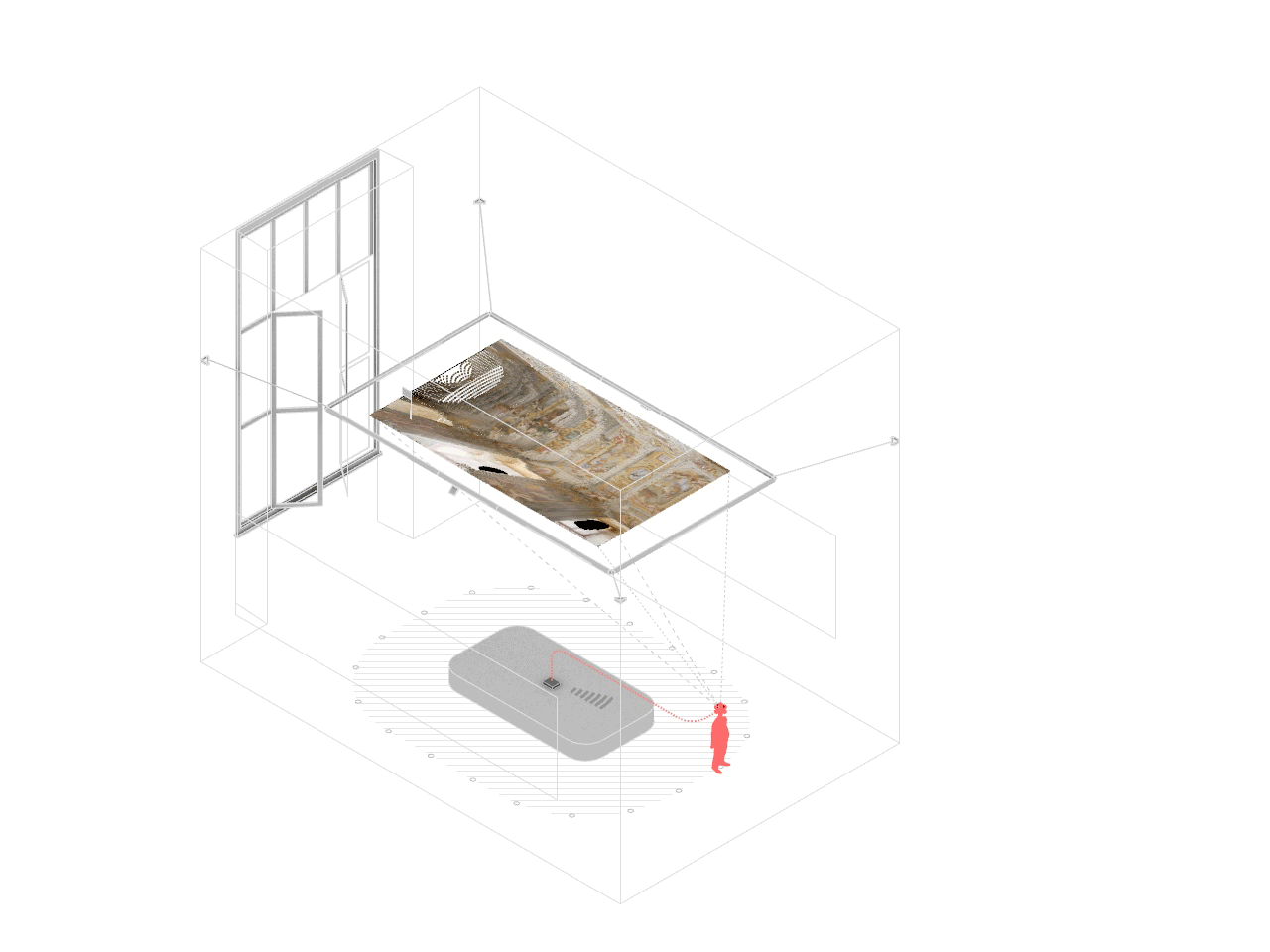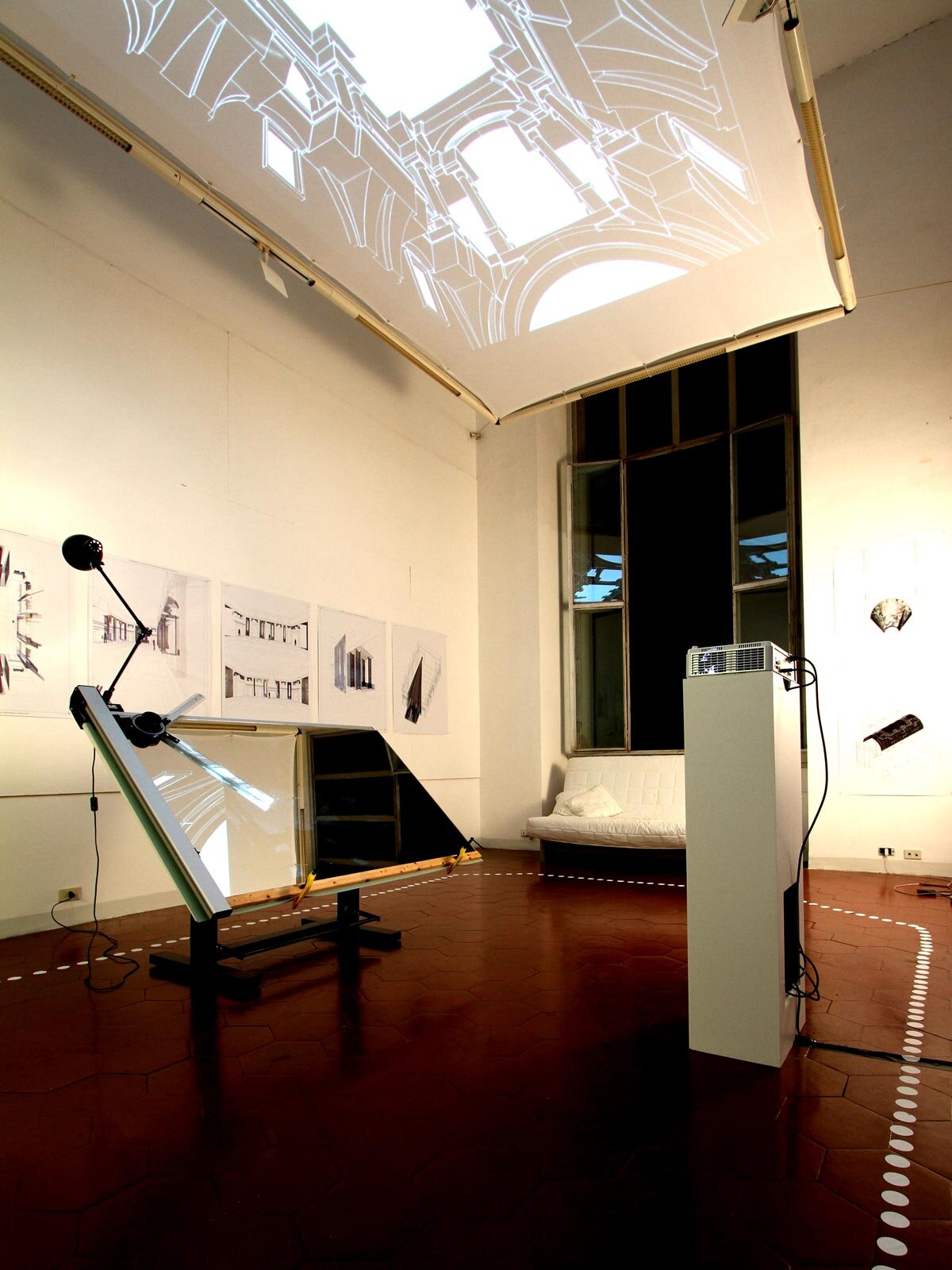The practice of Quadratura in Italy and eastern Europe has a rich tradition rooted in the mathematical and geometric investigations within the Jesuit church of Rome. While many key actors contributed to the discovery of the principals, none is known better than the work of Andrea Pozzo, whom would deploy high levels of complexity with regards to the picture planes and imagery that are still baffling and influencing architects of the contemporary. Of Pozzo’s most celebrated masterpieces, the ceiling apotheosis of St. Ignazio di Loyola in Rome is the most celebrated, featuring the projection of a heavenly central atrium through the complex geometry of the barrel vaulted nave.
/ Animation
The practice of Pozzo might be regarded as one of the first information modeling practices, wherein his technique required first for him to design and spatially create a virtual volumetric model of the intended depiction in order to predict its appearance from a given station point as it was distorted over a variety of complex shapes and picture planes. Painted in 1685, “The entry of Saint Ignatius into paradise” – Many geometric clues and straight lines can be seen, the rays of light and connections between the four corners, as well as the depiction of a reflecting mirror demonstrating an active interest in Enlightenment Science. The distortion was mastered through the use of a grid-work still detectable in small detail within the frescoe, a technique which Pozzo would use that involved laying out a planar grid of string below the ceiling on the floor and projecting the grid-work to the curved ceiling by use of a candle at the vantage point and string which would be embedded in the plaster on the distorted surface.
/ Video
Today viewers stand in St. Ignazio in front of a large mirror to witness the beauty of the illusion, fixed in the central vantage point. Through the cinematic ceiling, liberates the virtual design of Pozzo’s mind from the static nature of a singular vantage point. A digital model was created of the virtual space of the apotheosis based on the Pozzo’s original drawings, which was scaled and calibrated to fit the studio space at the exhibition venue. A ceiling was constructed between the venue’s lights as the projected surface, and a mirror was placed on a drafting board to transfer the digital world to the virtual physical realm. In lieu of a central vantage point, a video was made such that the virtual space was distorted anamoprhically to follow the viewers in the room, as they circumambulated along the walls of the exhibition, at moments aligning with their position allowing them to see and feel the virtual space.
/ Image
/ Project Team
Jonathan A. Scelsa, Jennifer Birkeland
/ Collaborators
American Academy in Rome, Stefano Silva, Lexi Eberspacher
/ Project Info
/ Project Type - Installation
/ Location - American Academy in Rome
/ Exhibition - Open Studios
/ Project Date - May 2018





